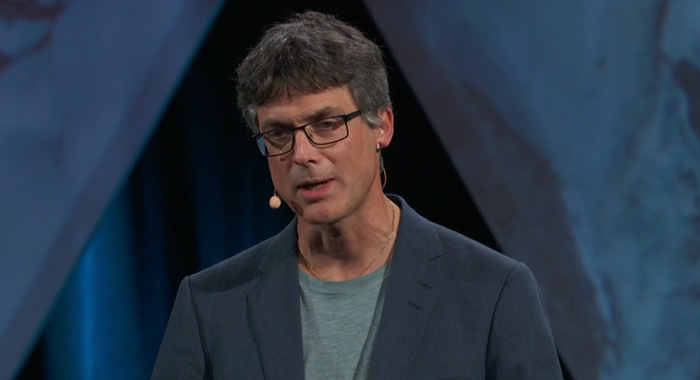In an interview with David McRaney of the “You Are Not So Smart” podcast, Norwegian psychologist Per Espen Stoknes discussed his book “What We Think About When We Try Not To Think About Global Warming”. The book tackles the paradox that despite 5 IPCC reports and over 30,000 climate change articles which have underlined the seriousness of climate change since 1989, public concern about the issue has actually declined. Stoknes’ work compiles the 300-400 articles that have been written about this psychological phenomenon into a set of five barriers which come into play when individuals are faced with this difficult message. He observed that the two most common methods for communicating scientific findings are to bombard the public with facts or to present an apocalyptic vision of the consequences of our actions. Unfortunately, both methods serve only to reinforce the positions people already hold on the issue. For those who are disengaged, dismissive or doubtful of the issue, a number of psychological barriers arise in response to this information: Distancing, Doom, Dissonance, Denial, and iDentity.
Distancing is the human tendency to place a low priority on events which are far removed from their daily experience or circle of influence. A news report of glaciers melting in Antarctica is therefore easily dismissed as unimportant in comparison with more pressing daily concerns. And just as images of dying polar bears or floods in Bangladesh are distant from us, so are timelines that extend beyond the next few days and months to describe sea-level rises in 2100, for example. Information can be further abstracted by statistics that are not relatable to one’s own experience; one person is a tragedy, but a million people are a statistic. The perception is created that climate change is happening in far away places, and in the distant future and/or to people who are culturally very different from us. Interestingly, public concern about climate change tends to increase whenever there is a heat wave, highlighting the fact that “the near takes predominance over the more distant or long term”.
The second ‘D’ is Doom. Very often scientists and media will point out that if we continue as we are doing, the consequence will be a hell-like world of human suffering. It is a well-known psychological fact that messages which generate fear and guilt create a very strong resistance to action. Our response is to quickly learn habituation and avoidance. We’ve heard it so many times before – the end is always nigh – and so we are pacified into inaction. If any guilt remains, we learn to avoid the message and the messenger, filtering it out altogether.
The third barrier is Dissonance. Suppose we are presented with the fact that fossil fuel emissions are bad, yet we decide to fly on a vacation to Thailand regardless. These two cognitions create a psychological dissonance, since we believe ourselves to be a good person, yet there is incongruity with our actions. This discomfort must be dealt with, which we do unconsciously in creative ways. One such way is to justify it by modifying the cognition. We can say our own fossil fuel emissions are small compared with someone else’s, or compared to pollution in other countries like China or India. We might also say that the plane will be going anyway, so one more person will not really make a difference. A second strategy is to minimize the importance of the cognition by finding sources that diminish the evidence. Here, Stoknes points out that this psychological search to resolve dissonance is responsible for a “demand side to disbelief”, in which misinformation campaigns can easily spread their messages with few facts and little effort. Yet another approach is to employ “moral licensing”. So for example we might say, “I put solar panels on my house, so it doesn’t matter that I flew to Thailand.”
The fourth ‘D’ is denial. If the dissonance cannot be resolved, we may be tempted to simply deny that the cognitions are related. To do this, we need to create a story to explain it. “Climate change is just a liberal excuse to increase government control”, or “These are just scientists trying to justify/increase their funding”. In this way, we are able to dismiss the issue altogether.
The final barrier is iDentity. If our sense of self is threatened by some message or messenger, we will inevitably experience resistance to receiving that information. Unlike neutral issues of science like volcanoes or astronomy, climate change is strongly politicized. Each perspective is associated with many other religious, political and lifestyle identities. A person is therefore more likely to believe a message delivered by someone they perceive as sharing their values than someone who doesn’t. Stoknes illustrates this with an example of car culture in the US. The “Prius Repellent” allows the driver of a diesel SUV or truck to expel a cloud of unburnt soot from his exhaust pipe at the push of a button, drowning out the “enviro-guy” who’s too close to his bumper. If such a person is confronted with the message that climate change is real, it becomes a threat to his identity. He must decide whether to side with the Prius owner over his own family, his friends and his way of life. Naturally, this causes psychological resistance.
Per Espen Stoknes makes a strong case that Distancing, Doom, Dissonance, Denial and iDentity are responsible for the failure of scientists to effectively communicate the reality of climate change. In a future article, I will explore the ways that these barriers can be avoided and surmounted.




